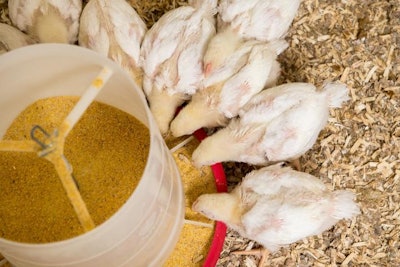
Researchers at the University of Maryland are studying the metabolism and liver function of embryonic chickens and hatchlings, which could result in new strategies that could improve the efficiency of poultry production and provide insights into both human and poultry health.
An important indicator of chick growth
The first week post-hatch is an important period in the chick’s life. During this time, the birds undergo a major metabolic shift, transitioning from the fat-rich diet they received an embryo to a high carbohydrate diet.
“When you think about the egg, it is a basically a bowl of yolk, with a lot of fat and a bunch of proteins, and egg white, which is a bunch of protein. So when the embryonic chicken develops, especially during the latter part of development, they start using the yolk lipids like crazy,” explained Nishanth E. Sunny, assistant professor in Animal and Avian Sciences at the University of Maryland.
The research team will use tracer molecules, also known as stable isotopes, to track biochemical pathways to learn about the mechanisms of metabolic transition in the embryonic chickens and hatchlings.
Strategies to optimize chicken growth
Understanding this transition could help researchers optimize nutrition and other strategies to promote better growth in chicks.
“From a poultry industry and economic standpoint, that period of transition is when the metabolism is very flexible to changes. In other words, that’s a prime period of time where we can target nutritional, hormonal or therapeutic strategies to change the metabolism,” Sunny said.
Insights into how the liver aids this metabolic transition in chickens could also result in better treatments for human metabolic diseases linked with high fat diets, like diabetes or fatty liver disease.
The research is funded by a grant from the United States Department of Agriculture (USDA) National Institute for Food and Agriculture (NIFA).
Like what you just read? Sign up now for free to receive the Poultry Future Newsletter.


















